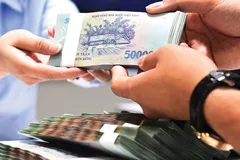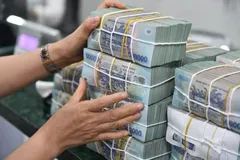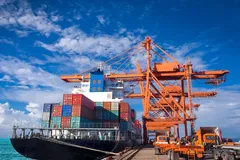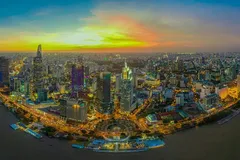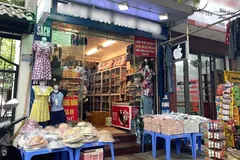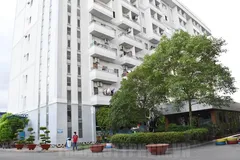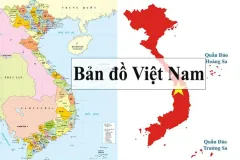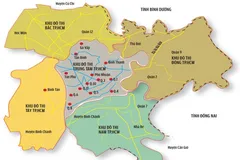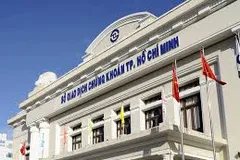
The resolution of long-standing legal bottlenecks has unlocked a wave of mega-developments, including the revival of previously stalled ventures. The shift has re-energised investor sentiment and injected renewed dynamism into the market.
A Surge of Landmark Projects
In mid-May, Vietnam’s Sun Group commenced work on one of Vung Tau’s most ambitious urban projects to date: the “February 3rd Avenue Urban Area,” situated across Wards 10 and 11. Covering 96 hectares and commanding an investment of nearly VND 37 trillion (approximately USD 1.45 billion), the development comprises five distinct functional zones. These include high-rise apartment towers, low-rise villas, a commercial complex, condotels, and hotels. The project’s centrepiece is a 19-hectare themed water park, expected to become a key draw for tourism and leisure.
Elsewhere in the south, Vingroup—the country’s largest private conglomerate—has begun construction on the Hau Nghia New Urban Area in Long An Province. Spanning 200 hectares, the development carries a price tag exceeding USD 1 billion. This is just one part of a broader push by Vingroup in the province, with two additional projects, together worth USD 6.5 billion, expected to break ground in June.
In Ho Chi Minh City, Vingroup also launched the Can Gio coastal mega-urban development in April. With a total investment of VND 217 trillion (USD 8.5 billion), the project is one of the most significant coastal urbanisation efforts in the country’s history, and is expected to redefine the region’s approach to waterfront planning.
In Ba Ria–Vung Tau Province, another large-scale initiative has emerged with the latest expansion of The Grand Ho Tram Strip. The newly launched 35-hectare phase commands over USD 1 billion in investment, featuring a five-star hotel network, luxury resort villas offering up to 6,000 rooms, a casino, a large-scale convention centre, and various entertainment amenities.
A Strategic Shift in Investor Vision
The development momentum is not confined to the south. Northern Vietnam is also witnessing an influx of large-scale projects. One of the most high-profile among them is Vietnam’s first Trump-branded resort complex, now under construction in Hung Yen Province’s Khoai Chau District. The sprawling 990-hectare project includes golf courses, villas, and resort facilities, backed by an investment of VND 39.8 trillion (more than USD 1.5 billion).
This project stems from a partnership between The Trump Organization—controlled by the family of former U.S. President Donald Trump—and Hung Yen Hospitality, a subsidiary of Kinh Bac City Development Holding Corporation. The Trump Organization is reportedly also exploring the possibility of constructing a Trump Tower in Ho Chi Minh City’s Thu Thiem urban district, a move that would further cement its footprint in Southeast Asia.
In tandem with these fresh investments, several dormant developments are being revived. A notable example is Lot 13A in Functional Area No.13 of Ho Chi Minh City’s Southern New Urban Area. Kim Oanh Group and Hong Quang Construction and Real Estate Investment JSC have broken ground on a joint project comprising three apartment buildings with a combined floor area of 12,941 square metres. The complex will offer 935 residential units and a suite of amenities including a swimming pool, landscaped park, commercial centre, playground, and sports facilities. The project is backed by an estimated investment of VND 1.92 trillion.
According to property analyst Trần Khánh Quang, the emergence of mega-developments—each spanning hundreds, if not thousands, of hectares and commanding investments in the billions—signals a fundamental shift in how developers are approaching Vietnam’s evolving real estate landscape.
“Southern provinces such as Long An and Ba Ria–Vung Tau are fast becoming magnets for major investment due to their availability of land and rapid urbanisation. Meanwhile, Can Gio is positioned to become a new model of coastal urban planning in Vietnam,” he noted.
The trend reflects both a strategic recalibration by private developers and the tangible effects of government-led reforms. Improved legal clarity, infrastructure rollouts, and a more favourable investment environment have converged to catalyse this surge in large-scale developments.
A Realignment of Regional Dynamics
While Ho Chi Minh City continues to grapple with a mismatch between supply and demand, its neighbouring provinces are stepping into the limelight. Binh Duong and Long An, in particular, are gaining ground thanks to a robust pipeline of new housing, more affordable pricing, and ongoing infrastructure upgrades.
In Binh Duong—especially in the urbanised cities of Thuan An and Di An—the residential market is showing strong momentum. Primary apartment prices now average around VND 40 million per square metre, up roughly 10 per cent year-on-year. Certain projects have reported absorption rates of up to 90 per cent, underscoring resilient demand from both owner-occupiers and buy-to-let investors.
One of the latest developments to launch is the Symphony of Life (Symlife) project, a premium residential complex located on the Binh Duong Boulevard in the heart of Thuan An. Developed by Nam Hiep Thanh Binh Duong Construction Investment JSC in partnership with Hoang Anh Holdings, the project aims to meet rising demand for high-end urban living in the fast-expanding province.
Taken together, these projects reflect a decisive bet on the continued expansion of Vietnam’s urban and resort real estate sectors. With billions of dollars pouring into housing, hospitality, and mixed-use developments, the southern economic corridor—from Ho Chi Minh City to Binh Duong and Long An—is fast becoming a showcase of Vietnam’s next wave of urbanisation.
Backed by improving policy frameworks, rapid infrastructure growth, and growing interest from international investors, Vietnam’s property market is entering a new era—one where billion-dollar stakes are becoming the new norm rather than the exception.







